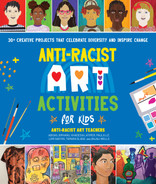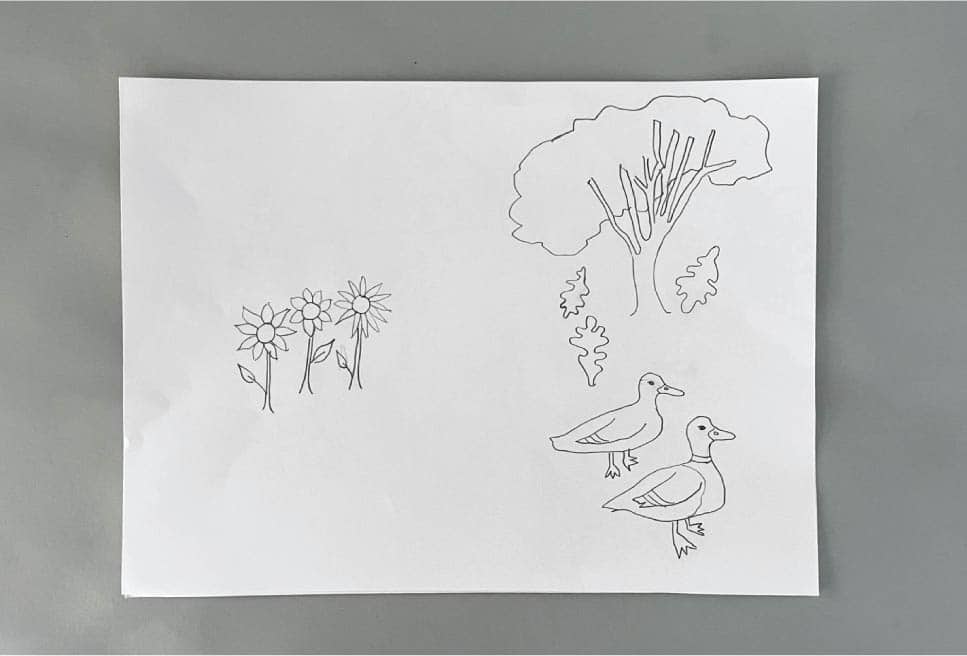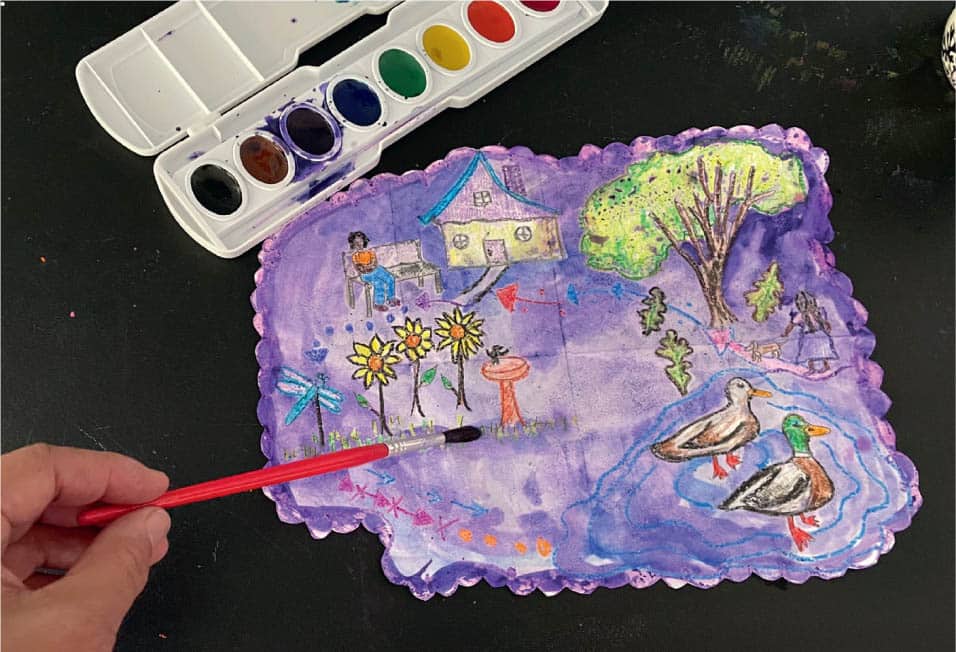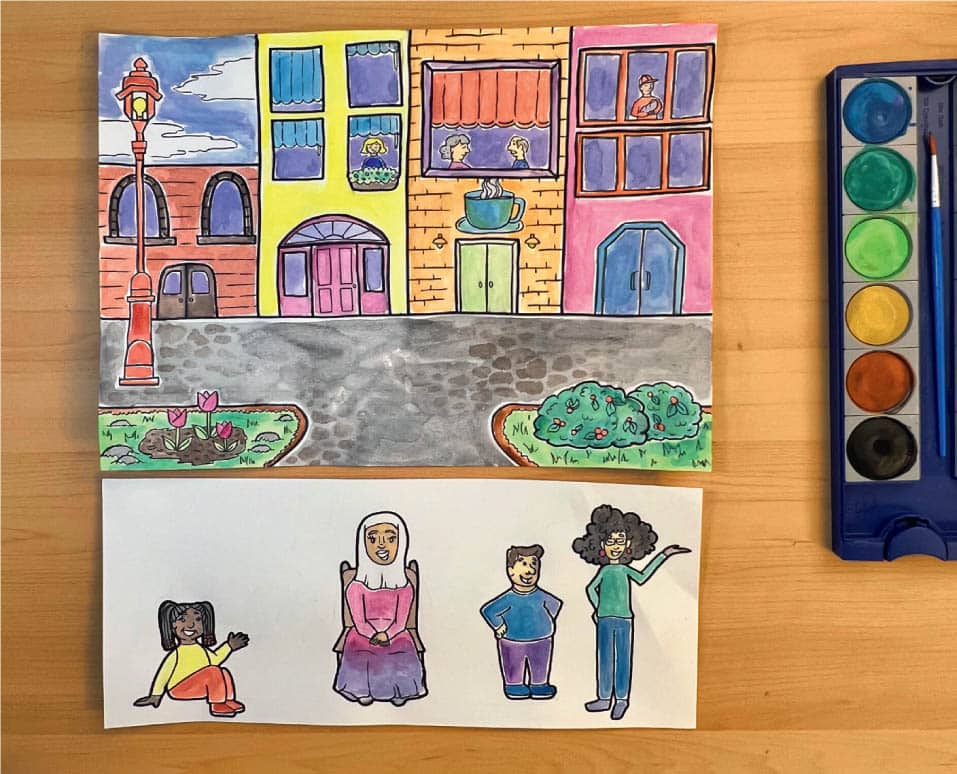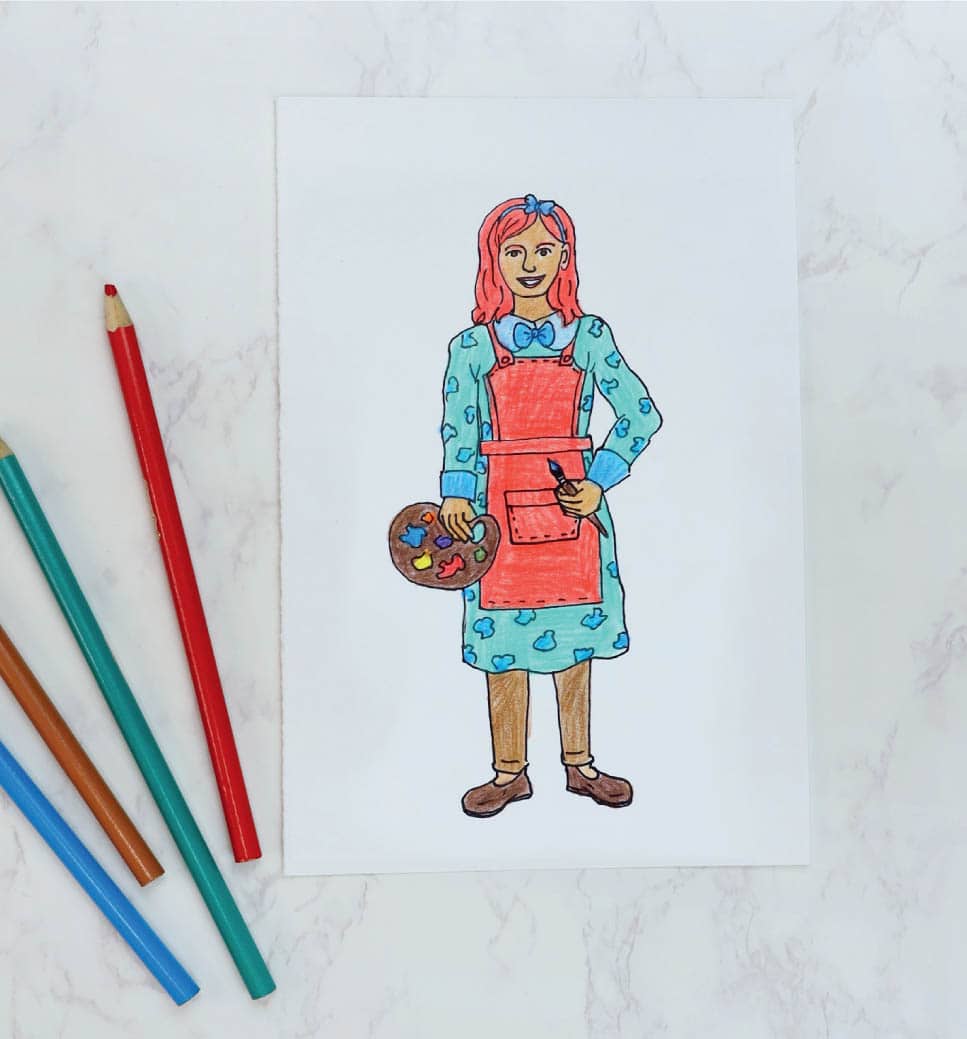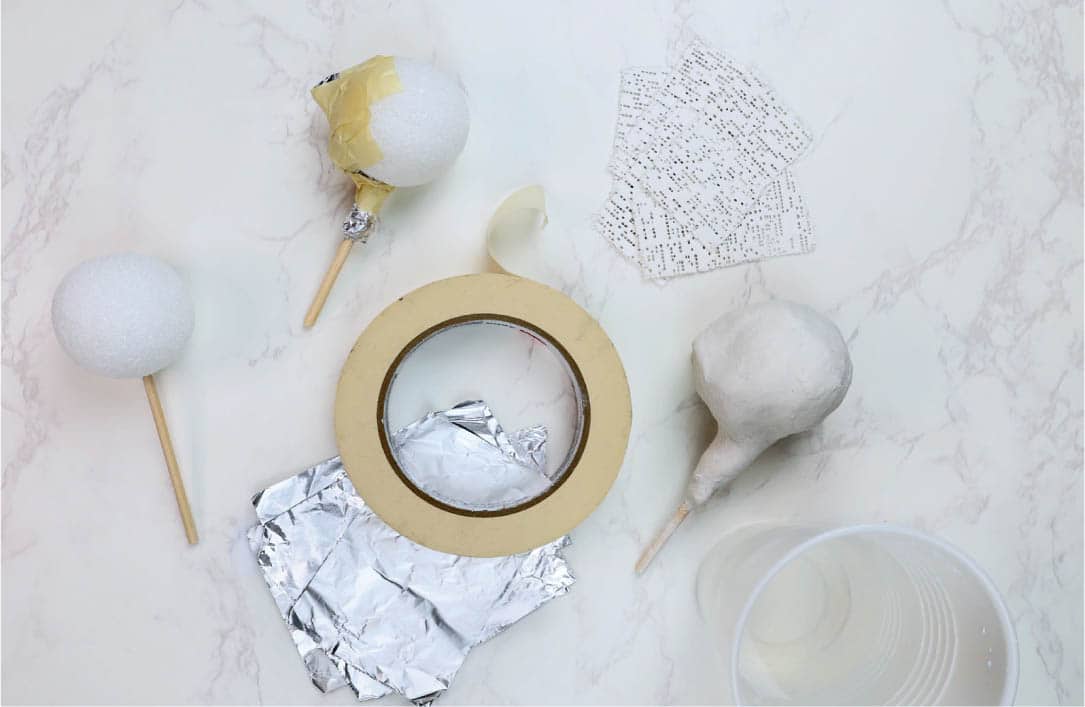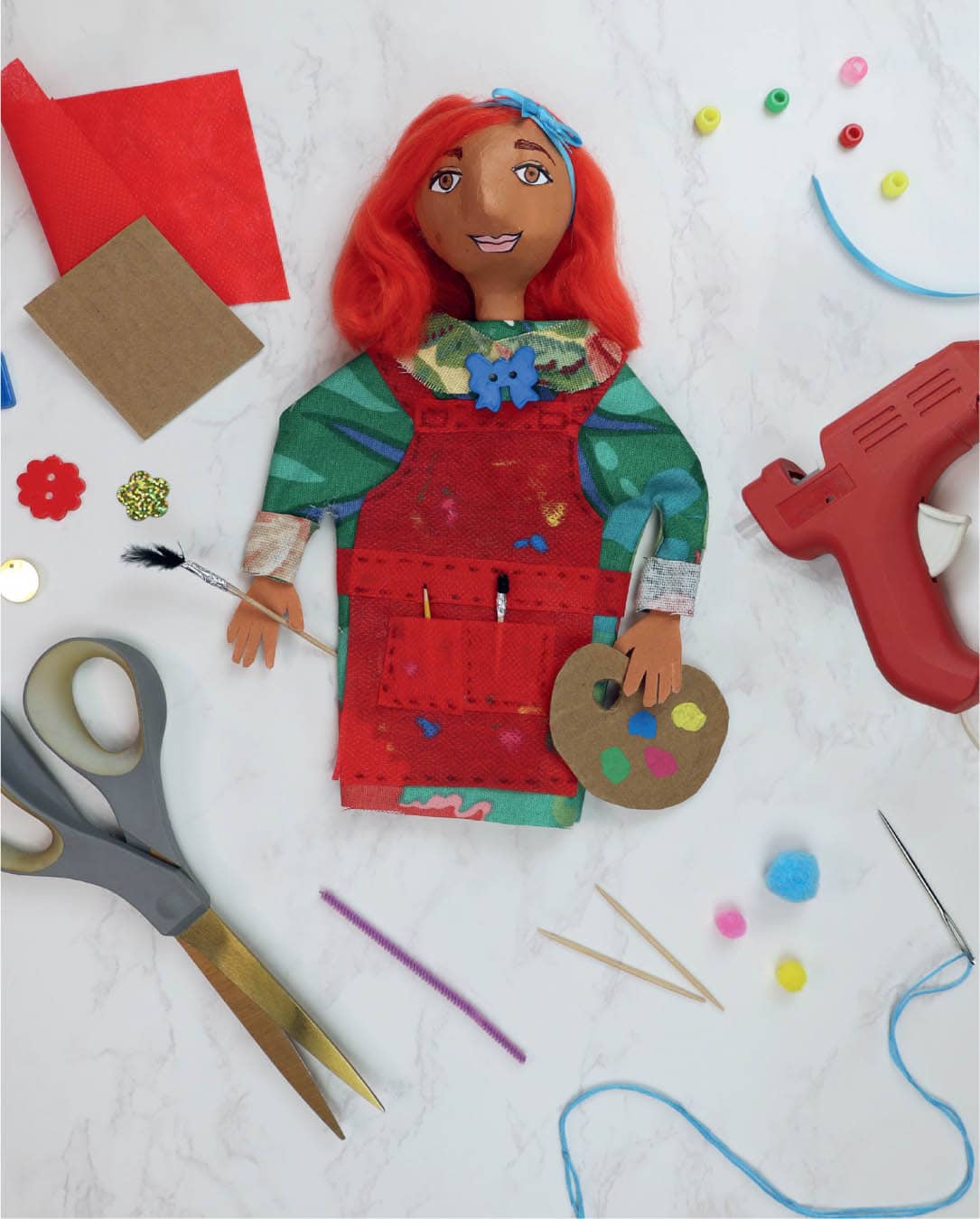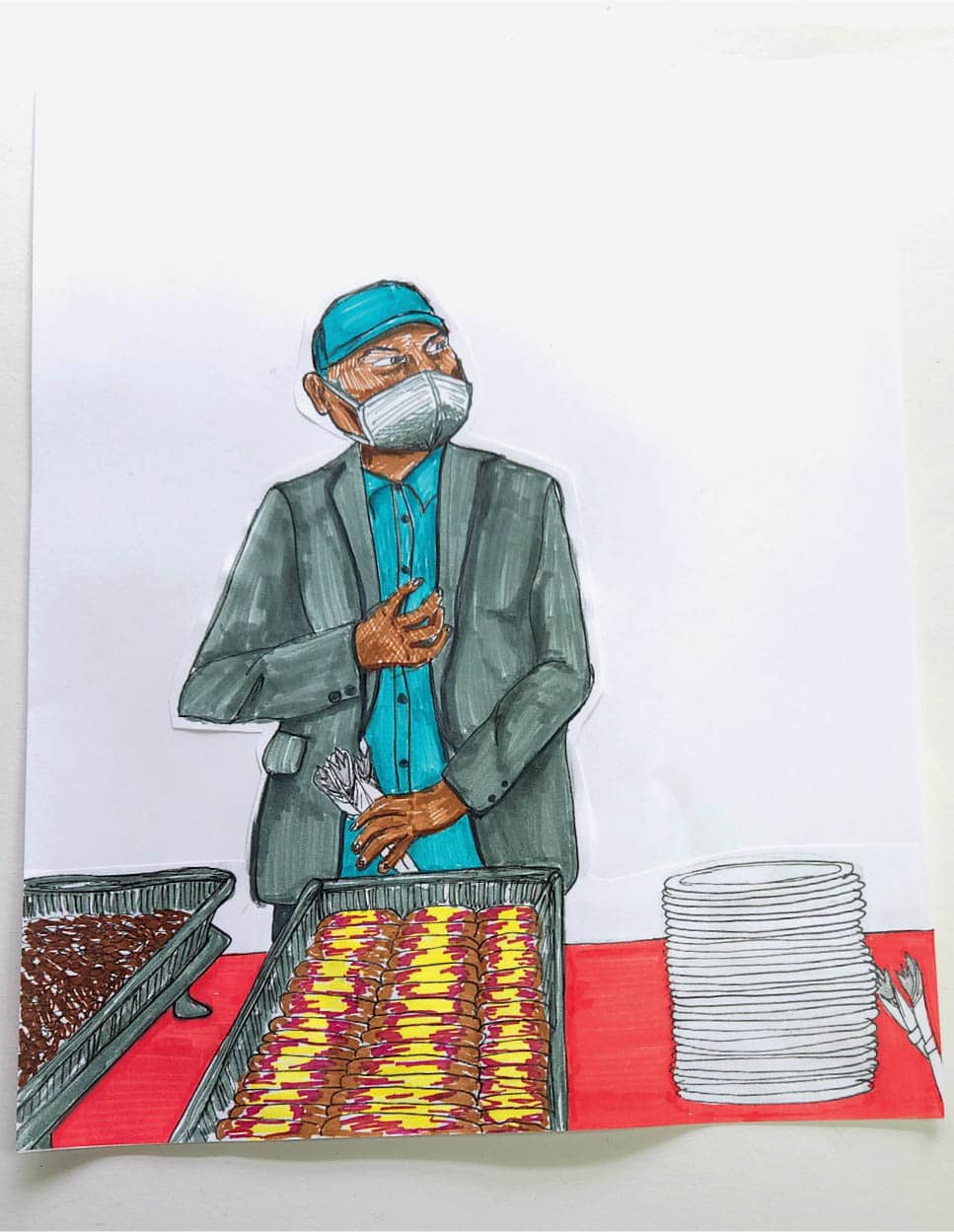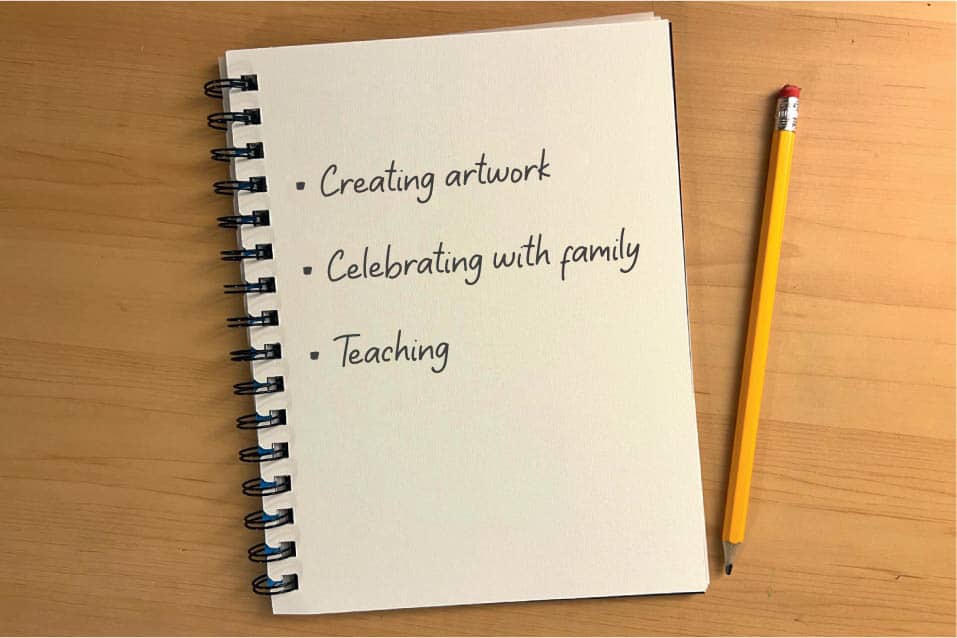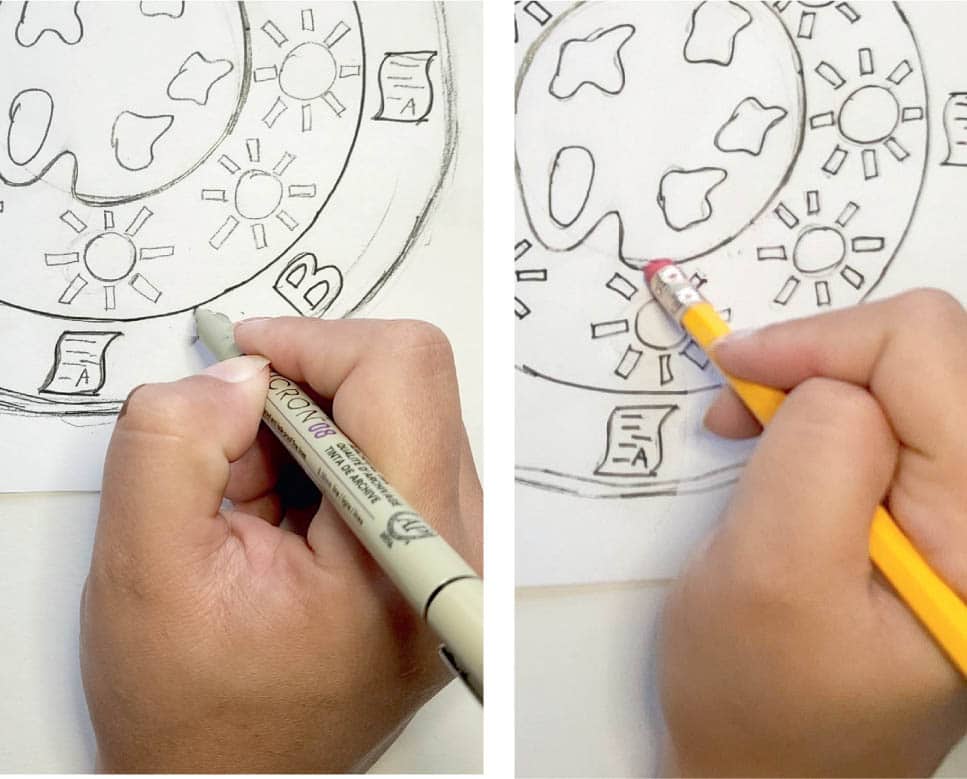In this chapter, you will be working on activities and projects that revolve around the theme of community. A community can be many things and each can look different from each other, but it is always about a group with something in common. Community makes people feel like they belong.
This chapter will help you explore what communities you belong to and become more comfortable explaining who and what is a part of your communities. You will spend time thinking and learning about the people and events that helped shape your communities. You will know how your home, school, and local communities are similar and different from other communities. Lastly, this chapter will empower you to uplift your community and better prepare you to be an ally for other communities.

Communities can consist of schools, neighborhoods, workplaces, and cities. Communities can also exist at places of worship, such as temples, mosques, synagogues, and churches. Because people create communities through investment and connection with other people, communities can exist outside of physical spaces. They can be spread across many places. For example, an online gaming community may have members worldwide who meet in an online space to share their common interests and support one another. Your sphere of influence is who you have the power to influence. It is the community of people that surround you and respect your opinions, such as friends and family. Your sphere of influence is who you can count on to help you fight for a cause. Activists use their sphere of influence to organize groups of people to participate in a protest, letter-writing campaign, boycott, strike, sit-in, walkout, etc., to fight for what they love, such as justice. As a collective group, you and your sphere of influence have more power than when you work alone. An essential part of being an anti-racist is leaning on your community to make a change. According to Tara Yosso, PhD, communities have cultural wealth. Community cultural wealth expands our idea of which communities are rich. Yosso explains that all communities are rich in the things they have, whether or not a community is rich with money or privilege. Communities are rich in culture, family, language, hopes and dreams, resistance, navigation, and social networks. Additionally, the community passes on, adapts, and changes community cultural wealth and knowledge over time. Community cultural wealth includes ways of passing on knowledge to community members and future generations as a way to survive and resist racism.PLACES CAN BE A COMMUNITY
SPHERES OF INFLUENCE AND ORGANIZING COMMUNITY

COMMUNITY CULTURAL WEALTH
take a mindful journey in your neighborhood and create a treasure map. Your community has a history that begins with the Indigenous cultures of your location. Explore the website native-land.ca to learn more. Native people honor and treasure animals and plants by maintaining a giving and caring relationship. When we take care of the animals and plants in our community, and the animals and plants take care of us in return, this is called eco-reciprocity. This shows we care about and value the environment as part of our community. 1. Walk your neighborhood with your adult and discover the treasures around you. Can you identify the native plants and animals? What are their names? Later you can research ways to have a giving and caring relationship with them. Who are the diverse people in your neighborhood? Give them a wave. What other interesting things did you see? 2. When you return from your walk, draw two or more plants/ animals you noticed. Fig. 1 Fig. 1: Draw two or more plants or animals. 3. Next, draw two or more interesting things, such as a colorful house or unique sign. Fig. 2 4. Draw two or more people you saw on your walk. Fig. 2 Fig. 2: Draw two or more interesting things and people you saw. 5. Add color with crayons and draw lines and shapes to connect your neighborhood’s treasures. Fig. 3 Fig. 3: Add color to your map and draw connections. 6. Cut out the edges of your map. 7. Paint a watercolor wash over your map. Fig. 4 Fig. 4: Paint a wash. 8. Fold your paper into four sections to create a pocket map. Share your map with a friend. They can now explore and find your treasures. Fig. 5 Fig. 5: Fold your map. 9. Think about how you can strengthen the connections in your neighborhood. How can you make new connections? Write your ideas on the front of your pocket map.MAPPING THE TREASURES OF MY NEIGHBORHOOD


MATERIALS
IN THIS ACTIVITY, YOU WILL

WHY THIS MATTERS
LET’S GET STARTED!
create a piece of art that intentionally focuses on drawing a diverse group of people. Diversity means having differences. People can be different in many ways. Some of our differences can include our race, ethnicity, age, size, abilities, gender, and more. We must recognize and appreciate diversity because it helps create a community of acceptance and belonging. 1. Think about the community where your drawing will take place. What are the people in the community doing, and how are they interacting? Use a pencil to sketch out your setting. Option: You can use a permanent marker to outline your drawing. Fig. 1 2. Think about the people in your community. How are they similar to and different from one another? On a separate sheet of paper, draw a diverse group of people, including different races, genders, sizes, ages, abilities, and more. You can draw people you know, people in your community, or people from pictures and books. Fig. 2 Fig. 2: Draw diverse people. 3. Use colored pencils, crayons, markers, or paint to add color to your setting and people. Fig. 3 Fig. 3: Add color to your setting and people. 4. Use a pair of scissors to cut out each person. Fig. 4 Fig. 4: Cut out the people. 5. Roll small pieces of tape around your finger and stick them to the back of each person. Adding tape to the back will allow you to move the people around the setting. 6. Before you begin arranging the people within your community, think about how they are interacting with each other. Place the people in your setting to illustrate how we can recognize and appreciate diversity in our community. Fig. 5 Fig. 5: Add the people to complete your community. The next time you are out, notice how our diversity strengthens our communities.DRAWING DIVERSITY


MATERIALS
IN THIS ACTIVITY, YOU WILL

WHY THIS MATTERS
LET’S GET STARTED!
create a puppet of a community helper that challenges your implicit bias. A community helper is someone whose job is to assist others. Sometimes we associate these different careers with specific genders and races. Doing so is an example of implicit bias. Implicit bias occurs when we unknowingly judge others and make assumptions about them based on part of their identity. This thinking can lead to unfair hiring practices and workplace environments. We must challenge our implicit bias and recognize that skills and interests, not identity, make people qualified for specific jobs and roles. 1. Think of someone whose job is to help others in your community. Draw a picture of them on a sheet of paper. Fig. 1 2. Take a look at the person you drew. What gender and race did you depict? Sometimes we associate specific jobs with certain genders or races. However, people of any gender or race can achieve in any profession. When we make these assumptions, it is an example of our implicit bias. Bias can lead us to prefer or dislike someone because of their identity. This can lead us to believe that someone is more qualified based on part of their identity and not their skills. We must reflect on why we have these ideas so that we can change the way we think to be more inclusive. Here are some ways we can challenge implicit bias: 3. Create a new drawing of your community helper. This time, challenge any implicit bias you possibly had. Your drawing might look different from what you originally envisioned. You will use this new drawing to create your community helper puppet. Fig. 2 Fig. 2: Challenge your implicit bias and create a new drawing of the same community helper. 4. To construct your puppet’s head, insert a wooden stick into a polystyrene ball. Create a 3-D profile using aluminum foil and tape to attach a chin, neck, and nose. Cut plaster strips into 2-inch (5 cm) pieces. Dip the plaster strips in water before applying it to your puppet’s head. Repeat until you have covered the entire head in plaster. Fig. 3 Fig. 3: Sculpt your puppet’s head. 5. Follow the instructions in “Our Many Shades of Skin” (here) to paint your community helper’s head and neck. Fig. 4 Fig. 4: Paint your puppet’s head. 6. Draw your community helper’s eyes and mouth on a separate sheet of paper. Use the visual references on these pages for assistance. After the paint on your puppet’s head has dried, cut and glue the eyes and mouth onto the face. Use yarn or wool felt for your community helper’s hair. Attach using a hot glue gun. Fig. 5 Fig. 5: Add eyes, a mouth, hair, and eyebrows. 7. Draw the body for your puppet on a sheet of fabric or felt. This might look like a short or long sleeve shirt. Cut and trace the body onto the second sheet of fabric. Place the two pieces of felt or fabric together and sew the sides. Leave space at the top for the head and at the bottom for your hand. Turn the fabric inside out. Fig. 6 Fig. 6: Cut and sew your puppet’s body. 8. Draw your community helper’s hands onto a piece of foam board or thin cardboard. Cut and paint both sides the same skin color as your puppet’s head. Fig. 7 Fig. 7: Cut and paint your puppet’s hands. 9. Use a hot glue gun to attach the head and hands to your puppet’s body. Emphasize your community helper’s role by applying mixed-media details and accessories. Fig. 8 Fig. 8: Add your final details. 10. Share your work! Consider putting on a puppet show highlighting all of the things you learned about implicit bias during this project. Use it as an opportunity to examine and prevent your own bias while teaching others.COMMUNITY HELPER PUPPETS


MATERIALS
IN THIS ACTIVITY, YOU WILL

WHY THIS MATTERS
LET’S GET STARTED!
create an artwork that celebrates an important person in your community. Our communities are made up of many different people, all of whom work together to make life safe, fun, and special! Being anti-racist means seeing and celebrating what makes the people in our community different. After all, our community only exists because of all the unique people who call it home. 1. Think about someone in your community who does something that makes your life better, safer, and unique. Write down who they are and what they do. Consider what images or symbols can represent your thoughts. Fig. 1 2. Draw a picture of this community hero in action on a piece of paper. Include images and symbols to show what they do and why you appreciate them. Fig. 2 Fig. 2: Draw your community member helping the community. 3. Use any art materials to add color to your artwork. Fig. 3 Fig. 3: Add color to your artwork. 4. Create a plan to celebrate your community hero. Here are some options to consider: There are so many possibilities for you to use your art to celebrate the members of your community!COMMUNITY HEROES

MATERIALS
IN THIS ACTIVITY, YOU WILL

WHY THIS MATTERS
LET’S GET STARTED!
create a drawing that highlights joy as a form of resistance. Worldwide, Black people continue fighting for the racial justice they deserve. Although some of Black history is rooted in trauma, it is important for Black people to focus on Black joy. Black joy encourages Black people to remember that their lives are more than resilience. It acknowledges that their experiences, inspiration, and cultures also matter. Joy is a form of resistance. It reminds us that we can find happiness in difficult times. Joy reminds us of what we are working toward and elevates us to celebrate successes. This activity will explore how we use art to celebrate joy. Extension activity: Think about the things that bring you joy. What makes these moments special to you? Write a story of a time that made this moment special to you. 1. Take a moment to brainstorm a list of things that bring you joy. What is something that brings you joy? Why is it important? Fig. 1 2. Think of a word or phrase that brings you joy. What words and images come to mind? With a pencil, sketch your drawing using words and an image. Fig. 2 Fig. 2: Sketch out your drawing. 3. Add color using markers, crayons, colored pencils, or watercolor paint. Fig. 3 Fig. 3: Add color. 4. Add details to your image using a white gel pen. Fig. 4 Fig. 4: Add details using a white gel pen.FINDING JOY


MATERIALS
IN THIS ACTIVITY, YOU WILL

WHY THIS MATTERS
LET’S GET STARTED!
use a circular design to create an artwork that outlines your current goals within your spheres of influence. Our communities are only as strong as their members. Each of us is responsible for ensuring we are working toward being the best version of ourselves so that we can share our talents and support our communities. Art is a powerful tool to help us visualize how we want to grow and can become a visual reminder to keep us focused on our growth and influence. It is also important to understand what is within our power or influence and what is not. Aligning our goals to our spheres of influence helps us create achievable goals. 1. Create a list of goals you have for yourself, and consider how these goals affect your community. Think of symbols, words, and colors you can use to represent those goals and add them next to the list. Fig. 1 2. On another piece of paper, draw or trace at least two circles in the middle of the page, placing one inside the other. (You can trace a round object in your home.) Fig. 2 Fig. 2: Draw two or more circles. 3. Arrange elements from step 1 inside your circles that match your spheres of influence. The inner circle will represent goals you have the most control over within your community. The outer circles will represent goals you have less control over in the community. Fig. 3 Fig. 3: Illustrate your goals within the circles. 4. Use a black pen to go over the outlines of your drawing and then erase the pencil marks. Fig. 4 Fig. 4: Outline your drawing with a pen and erase the pencil marks. 5. Add color to your design and choose a location to display your work that you will look at each day. This artwork will be a visual reminder to keep you focused on your goals and how to use your spheres of influence to serve your community better. Fig. 5 Fig. 5: Add color to your design.GOAL SETTING FOR GROWTH
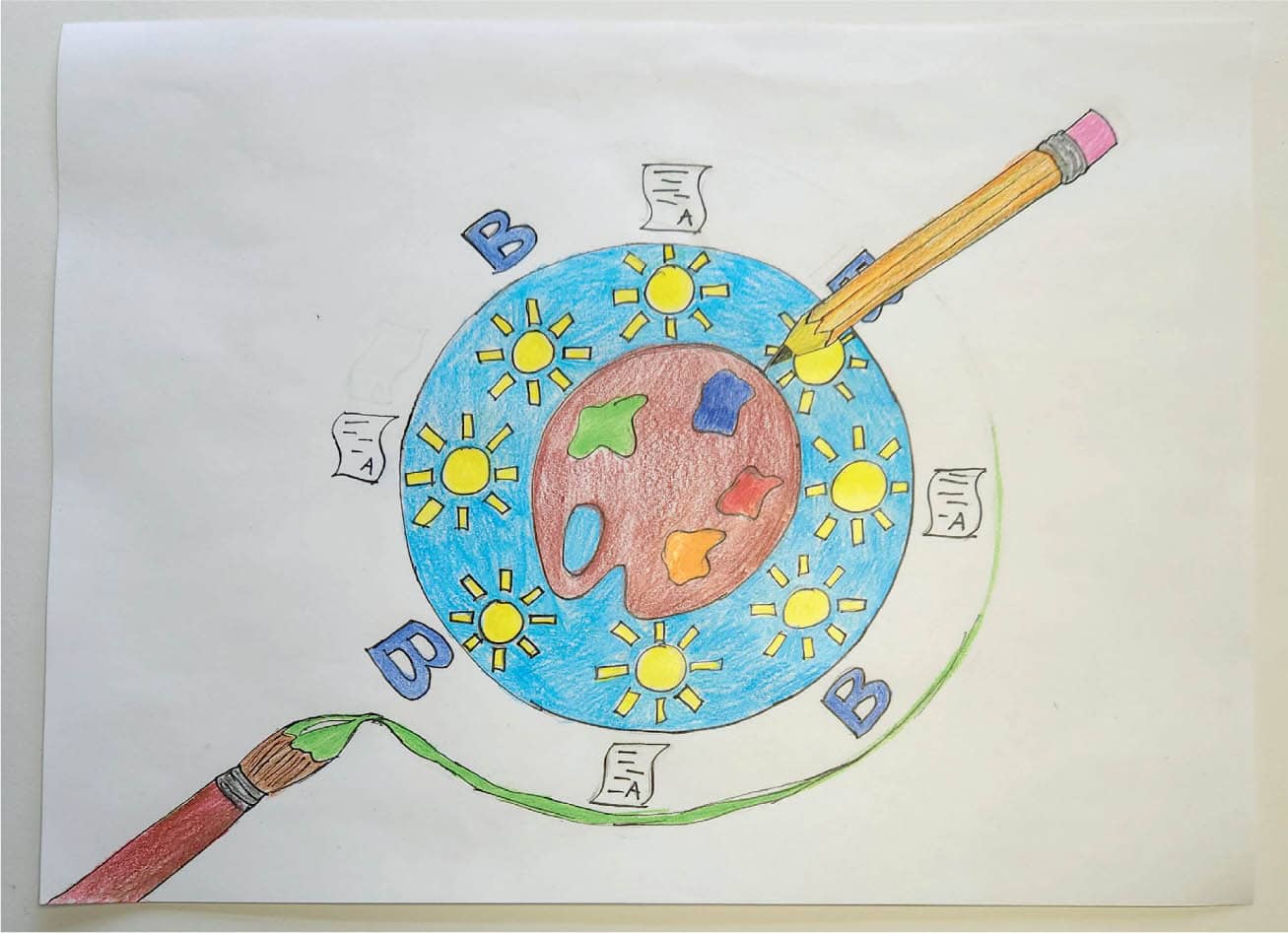

MATERIALS
IN THIS ACTIVITY, YOU WILL

WHY THIS MATTERS
LET’S GET STARTED!
